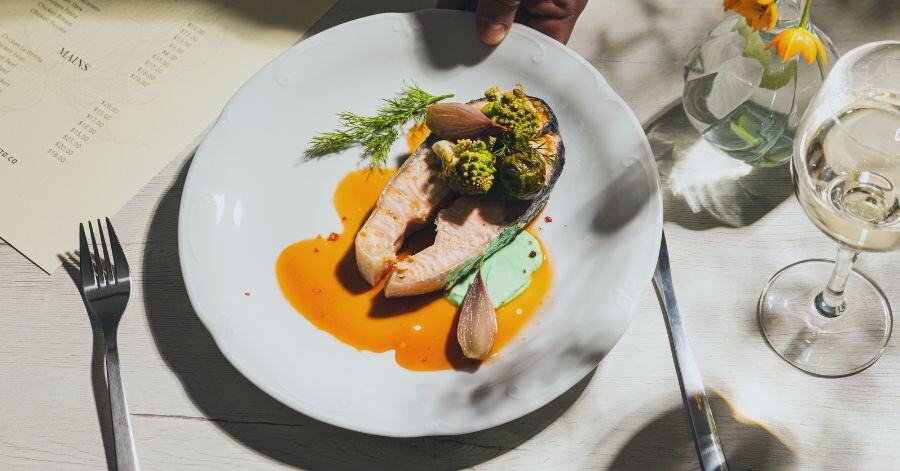Let’s be real, managing food costs isn’t the most glamorous part of running a restaurant, but it sure is one of the most important! After all, a perfectly crafted menu is only as good as the numbers behind it.
You could have the trendiest dishes in town, but if you’re spending more on ingredients than you’re bringing in, you might find yourself in the red instead of the black. Yikes.
Understanding food cost isn’t just about keeping track of your pennies and dimes, it’s about making sure you can keep your business thriving while delivering the best meals to your guests. It’s like putting together a great recipe: the right balance of ingredients, portion sizes, and pricing will make everything come together perfectly.
Don’t worry, we’re here to help you cook up the perfect strategy for calculating food cost, so you can get the most bang for your buck without sacrificing the quality of the food you’re serving up.
Ready to get started? Let’s dive in and discover how mastering food cost calculations can help you boost profitability, reduce waste, and ultimately put your restaurant on the path to success.
What is Food Cost & Why Does It Matter?
Okay, first things first, what exactly is food cost? In simple terms, food cost refers to the total cost of all the ingredients that go into your menu items.
It’s the price you pay to bring those delicious dishes to life. Whether you're whipping up a gourmet burger or a creamy pasta, the cost of your ingredients adds up, and if you're not keeping track, it could mean more headaches (and less profit) down the road.
Food cost directly impacts your menu pricing. If you’re not factoring in your ingredient costs properly, you might be setting yourself up for a pricing disaster.
Why is it so important? You need to price your menu items in a way that covers ingredient costs, labour, overhead, and still leaves room for profit. If your food cost percentage is too high, you’re leaving money on the table. On the flip side, if it’s too low, you might find yourself underpricing and running into financial trouble. It's all about finding the perfect balance.
And speaking of balance, let’s talk about food cost percentage. This is a key number that helps you understand how much of your revenue is spent on ingredients. By keeping track of this percentage, you’ll know exactly where your money is going and be able to make smarter decisions about pricing, portion sizes, and menu design.
What are the Key Components of Recipe Food Cost Calculation?
Now that we’ve got the basics down, let’s take a closer look at the ingredients of a solid food cost calculation. When calculating the cost of a recipe, you’ve got a few key components to consider:
Ingredient Costs
This one’s pretty straightforward. To calculate the cost of each ingredient, you’ll need to break down your bulk purchases into smaller portions. For example, if you buy a gallon of olive oil for $30, but you only use 2 tablespoons for a recipe, you’ll need to figure out how much each tablespoon costs. Simple math, multiply the cost by the number of portions you use. Don’t forget to include every ingredient, from the main event (hello, steak!) to the supporting cast (we’re talking about you, garlic and herbs).
Yield and Waste
Ingredients don’t always come in perfect packages, and the reality is you’re not always going to use every ounce of every ingredient. This is where yield comes in. Yield is the percentage of usable product you get from your ingredients. For example, if you’re buying whole carrots, you might only use the edible part and discard the tops or peelings. That’s where yield comes into play. Knowing your yield percentage helps you avoid wasting food and can save you some serious cash in the long run.
Portion Sizes
Portion sizes are a biggie. It’s not just about making sure your guests are satisfied (though, of course, that’s important), but it’s also about keeping your food costs under control. The bigger the portion, the more you’ll spend on ingredients. So, if your portions are inconsistent - say, one chef serves a generous portion of fries and another serves a tiny side - it could lead to higher food costs without you even realizing it. Standardizing portion sizes is a simple way to keep your food costs in check and ensure consistency across your dishes.
A Step-by-Step Guide to Calculating Food Cost for Your Recipes
Ready to crunch some numbers? Don’t worry, we promise this is easier than making a batch of chocolate chip cookies (and arguably more rewarding). Follow these six steps to calculate your food costs with confidence:
Step 1: List All Ingredients
Start by listing all the ingredients in your recipe, don’t skip the small stuff! From the main proteins to the tiniest garnish, write down everything you’ll need. This will give you the complete picture of your recipe’s ingredient costs.
Step 2: Determine Unit Costs
Next up, determine the cost of each ingredient in a unit you can work with, whether that’s by ounce, pound, tablespoon, or gallon. If you’ve bought ingredients in bulk, break them down into smaller portions. For example, if a 5-pound bag of flour costs $4, figure out how much it costs per pound (that’s $0.80 per pound). From there, break it down further for the amount you’re using in your recipe. If your recipe calls for 2 ounces of flour, you’ll need to calculate the cost of those 2 ounces based on the price per pound.
Step 3: Calculate Per-Ingredient Cost
Now that you know the unit cost, it’s time to calculate the cost for each ingredient in your recipe. Simply multiply the amount you use by the unit cost. So, if your recipe calls for 3 ounces of olive oil, and the cost per ounce is $0.30, then the cost of olive oil for your recipe is 3 x $0.30 = $0.90.
Step 4: Add Up the Total Recipe Cost
Add the costs of all your ingredients together to get the total cost of the recipe. This number represents what it costs you to make the entire dish before you think about portioning, pricing, or profit.
Step 5: Divide by Yield and Portions
Next, figure out how many portions your recipe will serve. For example, if your recipe yields 8 servings, you’ll divide the total cost by 8 to determine the cost per serving.
Step 6: Calculate Food Cost Percentage
Finally, calculate your food cost percentage by dividing the cost per serving by the menu price and multiplying by 100. For instance, if the cost per serving is $2 and you sell the dish for $10, your food cost percentage is (2 ÷ 10) x 100 = 20%. This tells you how much of your revenue goes toward the cost of ingredients.
Keep an eye on this number, generally, a food cost percentage of 28-35% is considered a sweet spot, but this can vary depending on your menu and type of restaurant. You can learn more about what food cost should be in our blog, What Should Food Cost be in a Restaurant?
The Importance of Using Inventory Management Software for Food Cost Calculation
Alright, so we’ve got the basics down, but here’s where things get even more exciting, technology!
Using inventory management software can take your food cost calculations to the next level. Gone are the days of manually tracking ingredient costs on spreadsheets and losing track of inventory. With the right system, you can track inventory in real-time, get precise numbers on ingredient usage, and keep tabs on waste (before it starts eating into your profits).
Modern restaurant inventory software isn’t just for big chains, it can work wonders for any size restaurant. By keeping track of your ingredients and sales, you can easily adjust pricing or portion sizes based on the data you’re seeing. You’ll also gain valuable insights into how your menu is performing, which helps you make smarter decisions to boost your profit margins.
Top Ways to Reduce Food Costs Without Sacrificing Quality
Now that we’ve got the numbers down, let’s talk strategy. How do you keep food costs low while still serving high-quality dishes? There are, of course, a plethora of ways to keep food costs in check, but below we’ve listed a few of the best.
1. Sourcing Ingredients StrategicallyWork with your suppliers to negotiate better deals and consider sourcing locally. Seasonal ingredients can be both cheaper and fresher, which means you’re getting more bang for your buck.
2. Standardizing Recipes and PortionsConsistency is key. By standardizing your recipes and portions, you can ensure that every dish is made with the same cost in mind, and avoid those pricey, overzealous portions that sneak their way into your kitchen.
3. Reducing Food WasteGood inventory management isn’t just about tracking numbers, it’s also about reducing waste. Proper storage and careful planning can help prevent spoilage, and using scraps for new dishes can help you get the most out of your ingredients.
Make Sure to Use Food Cost Calculations to Influence Your Pricing Strategy
Now that you have a handle on your food costs, it’s time to use that info to price your menu. Knowing your food cost percentage helps you set profitable prices that are both fair to your customers and sustainable for your business.
You can also use food cost calculations to fine-tune your portion sizes and ingredient substitutions. Maybe swapping a pricey ingredient for a more affordable one still gives you that amazing flavour customers love. And if certain dishes aren’t pulling their weight financially, it might be time to rethink or remove them from the menu.
At Sculpture Hospitality, we’re here to help you get a handle on your food costs, without losing your recipe for success.
Our inventory technology and expert team are ready to help you streamline your operations, reduce waste, and maximize your profit margins. Ready to cook up some real savings? Let’s chat.










